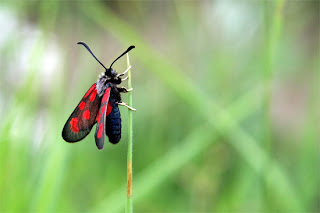I wanted to learn how to shoot Macro photography properly. As I went home at the weekend I figured it would be a great oppertunity to borrow my mum's macro lens and do a few experementations. I looked up tutorials and tips on the internet to help guid me and attempt to do it properly.
Research:
Switch on to macro mode
This may seem like a no brainer but many a begginer has been fustrated by the salesman's claims about macro just because they don't read the manual. This is usually represented by a small flower on the settings dial, but make sure you know where it is on your individual camera. This setting allows you to bring the camera lens closer to the subject.
Use a tripod
Although some say a tripod can be useful, I think that it is essential for any form of close-up or macro photography. It will help limit any form of user induced vibration which will give a sharper image. Camera shake is more noticable the closer you get to the subject. Getting the best should be your priority so getting a good tripod is key.
Use flash
Its not always necessery to use flash, but often it is essential as shadows are a macro photographers enemy. Try shooting where possible in bright availiable light and if necessery use some form of reflector, from a photo shop. IT would be ideal if your camera gave you control of the flash but if it doesn't use a piece of tracing paper and tape it over the flash to deffuse the harsh strobe light.
Focusing
The ability to focus manually is a big bonus when shooting macro. Because you are working with such a limited depth of focus you need to be able to determine what you want in focus. Allowing the camera to chose by auto focusing will interfere with where you want to focus. So set it manual focus and focus on the part of the subject you want in sharp focus.
Aperture
The ability to set your aperture manually is a big advantage as this allows you to control your depth of focus mentioned in point four. The technical term for this is depth of field and it determines how much of your image is in focus in front of your subject. Some cameras won't allow changing the aperture once the setting has been changed to macro mode. If you can change the aperture you'll probably use a large aperture in order to blur out the background which is very effective for close-ups.
Composition
Don't forget the rules of composition like the rule of thirds. Placing your subject and making it the focal point are essentioal to good macro photos. Often when people shoot close up composition goes out the window because they are so focused on the detail.
Self-timer
The use of your cameras self-timer is essential in limiting camera shake and vibration while pressing the shutter button. This is baiscally a delayed shutter release allowing vibrations to subside before the photo is taken. Check out your manual to see how it works on your perticular camera.
Macro photography is fun and it opens up worlds within worlds. But it can become addictive and expensive. It's always a good idea to try it out on a compact before spending money on more expensive digital SLR camera systems.
Example:

No comments:
Post a Comment